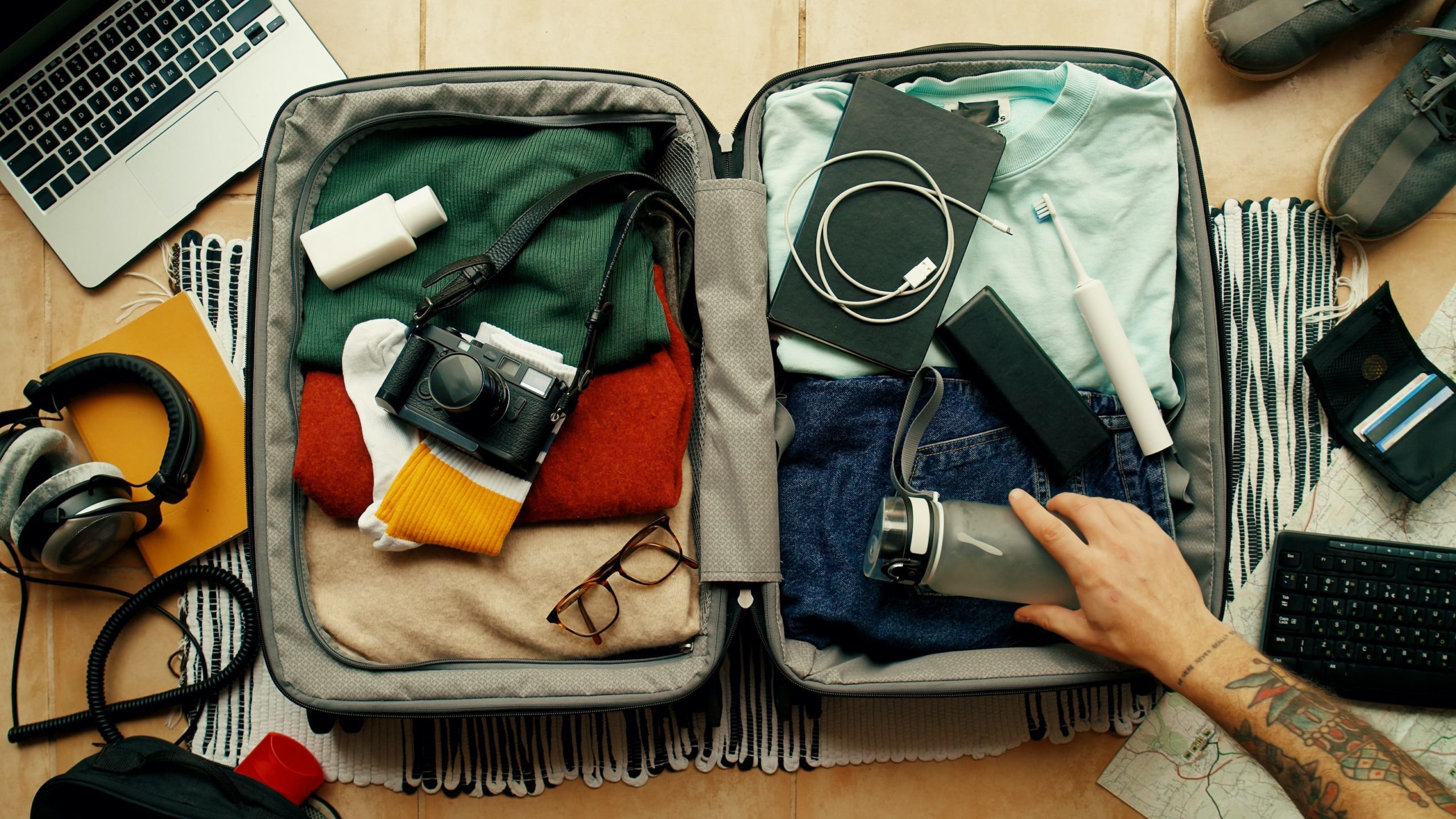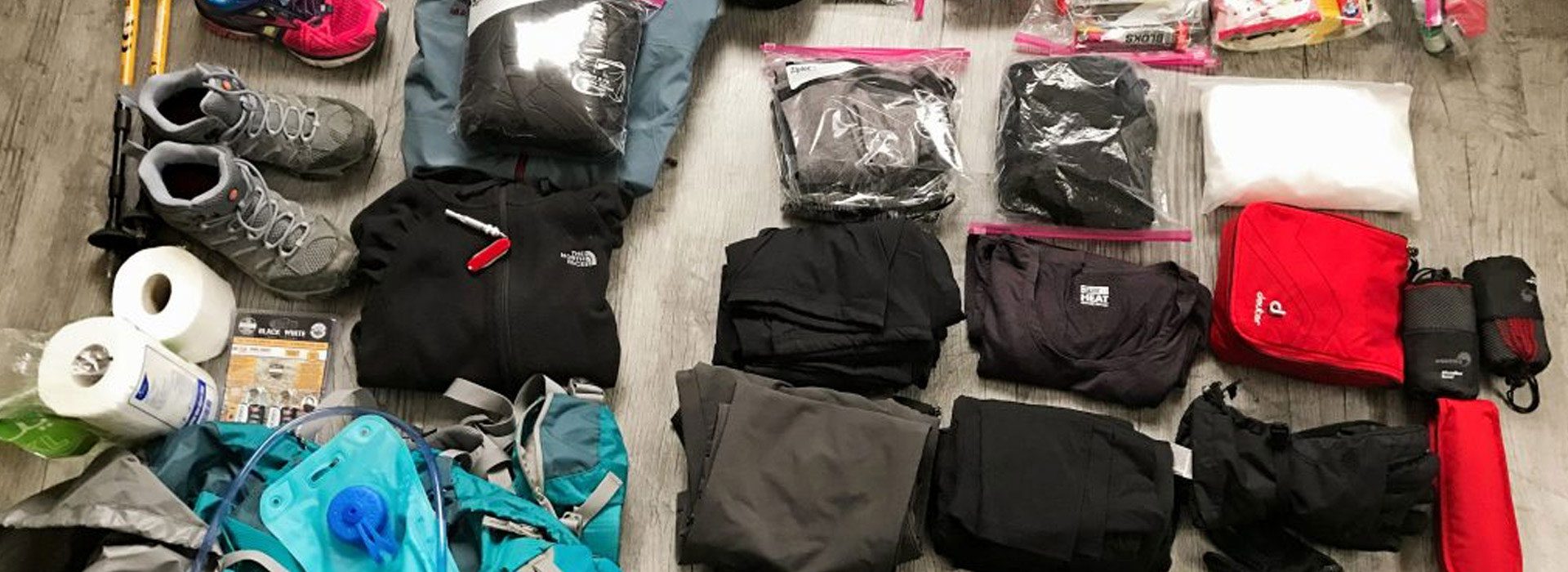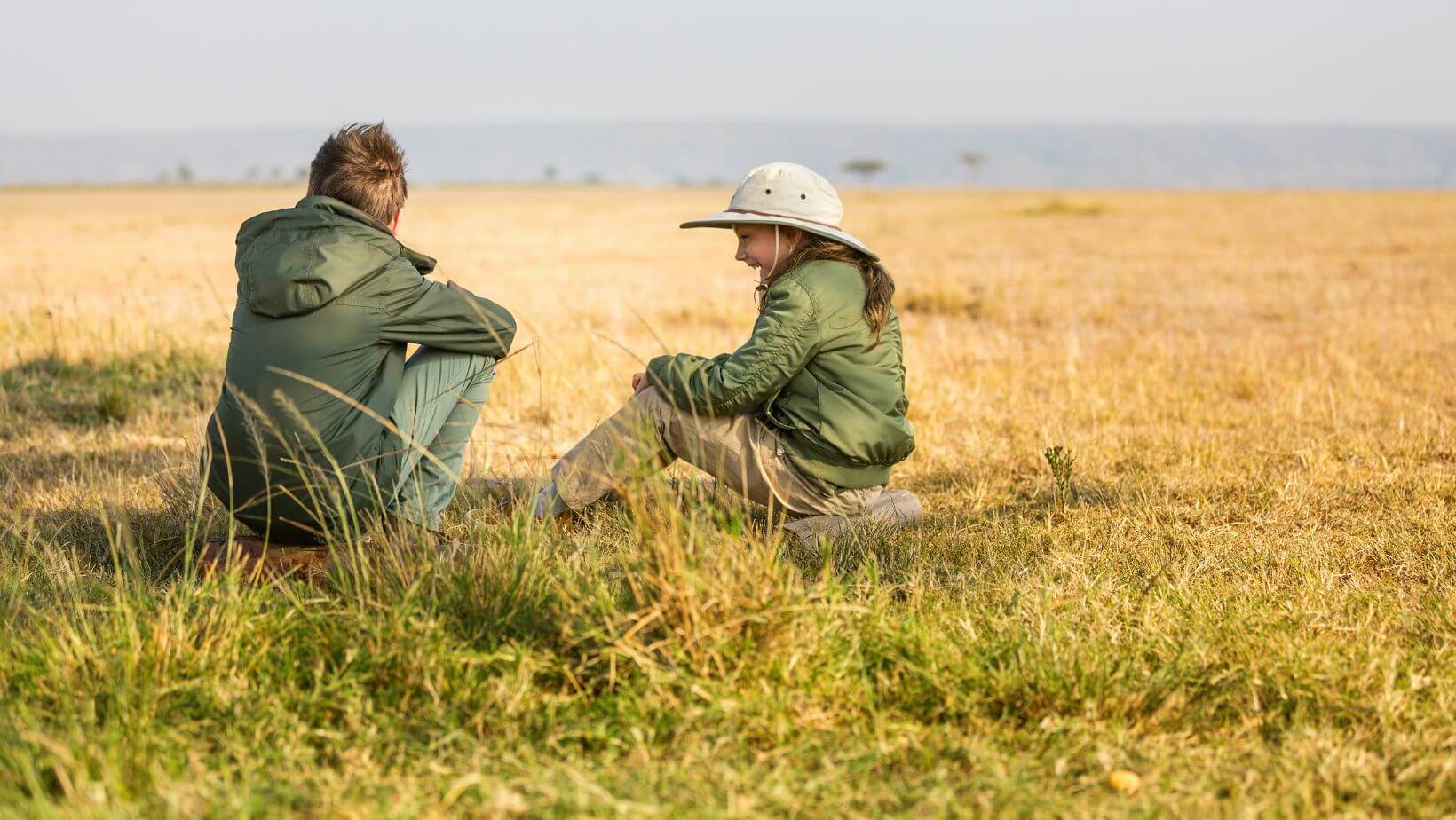Tanzania safari packing list
Essential Packing List for Tanzania Safari
Embarking on an African safari in Tanzania is a dream come true for wildlife enthusiasts and passionate adventure lovers. With its diverse landscapes, abundant wildlife, and breathtaking national parks, Tanzania offers an unparalleled safari experience. To prepare for your trip, pack smart and bring everything you need to fully enjoy your safari adventure.
Packing appropriately for your Tanzania safari will ensure your comfort and convenience throughout the journey. Here is a comprehensive list of items to include in your Tanzania packing list:
What Should You Pack for Your Flight to Tanzania?
Prepping for a flight to Tanzania? It’s essential to ensure your in-flight comfort and convenience by packing these must-have items:
- Comfort Essentials: A blow-up neck pillow can be a lifesaver on long flights. Pair it with eye shades and earplugs to help you catch some rest without disturbance.
- Entertainment: Time can drag on a flight, so bring along your favorite books or magazines. For music lovers, a portable music player like an iPod or even a loaded playlist on your smartphone can be great companions.
- Snacks and Hydration: Airplane meals don’t always hit the mark. Pack some snacks like granola bars or nuts along with a reusable water bottle to stay hydrated.
- Personal Care Items: Toiletries such as toothbrush, toothpaste, and facial wipes can keep you feeling fresh. Consider a small tube of moisturizer as cabin air tends to be quite drying.
- Sleep Aids: If you anticipate trouble sleeping, melatonin tablets or another sleep aid could be useful to help you adjust to the new time zone.
- Important Items: Keep critical items, such as medication and travel documents, close at hand in case your checked baggage is delayed.
Packing strategically for your flight ensures a pleasant journey and a fantastic start to your safari adventure!
Understanding Luggage Weight Limits for Your Tanzanian safari packing list
When planning your journey to Tanzania, especially for a thrilling safari, knowing the baggage rules is crucial. Flights into safari areas often come with specific restrictions.
General Guidelines:
- Weight Limit: Typically, travelers can carry up to 15 kg (33 lbs) per person.
- Bag Type: It’s advisable to use soft bags, such as duffel bags. This is because cargo space is limited, and these bags are more adaptable.
Airline Specific Weight Policies in Tanzania
- Allowance: 20 kg / 44 lbs, including handbag.
- Dimensions: Max size of 60cm x 30cm x 25cm (24” x 12” x 10”).
- Excess Fees: $3 per extra kilogram.
- Allowance: 15 kg / 33 lbs, including handbag.
- Dimensions: Max size of 90cm x 65cm x 35cm (35” x 25” x 13”).
- Excess Fees: $50 for 0-10 kg, then tiered pricing up to $145.
- Allowance: 20 kg / 44 lbs, including handbag and camera.
- Dimensions: Max size of 60cm x 45cm x 33cm (24” x 18” x 13”).
- Excess Fees: Varied rates, starting at $60.
- Allowance: 15 kg / 33 lbs, including handbag.
- Dimensions: Max size of 76cm x 48cm x 29cm (30” x 19” x 11”).
- Excess Fees: Between $85 and $95 per bag.
Additional Tips:
- Excess Baggage: It may be transported if space permits and is subject to extra charges.
- Packing Strategy: Tune your packing list to stay within limits and avoid surprises at the airport.
-
Weigh Your Bags: Before heading to the airport, weigh your luggage at home to ensure you’re within the limit.
- Pack Light: Consider bringing versatile clothing and reducing unnecessary items.
By understanding these luggage weight limits, you can ensure a smoother journey to your dream destination. Travel light, and your safari experience will be stress-free and enjoyable!
What Types of Baggage Are Suitable for a Tanzania Safari?
Tanzania safari packing list requires smart packing choices, and selecting the appropriate baggage is key. Here are the types of bags you’ll need for a successful adventure:
1. Soft-Sided Duffel Bag
When preparing for your safari, opt for a soft-sided duffel bag instead of a rigid suitcase. These bags are more adaptable to the limited space on small charter flights and safaris. Choose one with a capacity of around 80 liters and ensure it has a strong, reliable zipper that can be locked for security.
2. Practical Safari Daypack
The right daypack is essential for your daily excursions. Think of it as your go-to bag for daily essentials such as sunscreen, sunglasses, snacks, a water bottle, and your passport. A daypack keeps your hands free and your necessities close, making it a handy companion on game drives and nature walks.
Pro Tip: Pack Smart
To maximize space, consider investing in packing cubes. These nifty organizers allow for efficient packing by compartmentalizing your items, which helps keep everything neatly accessible while saving space.
Essential safari clothes
When choosing your safari wardrobe, always prioritize practicality over style. Here’s a breakdown of essential clothing items you should pack:
- Lightweight and Breathable Clothing: Pack light-colored, lightweight, and breathable clothing to keep cool during hot days. Dark colors attract insects, so opt for neutral hues such as beige, khaki, or olive green. Avoid white clothing, which can get stained quickly.
Tops for Everyone:
- Women: Consider packing a safari shirt, a hooded safari jacket, fleece zip-up jacket, along with a mix of short-sleeve and long-sleeve shirts. Cotton t-shirts are also a must.
- Men: A fleece pullover, lightweight jacket, and breathable short sleeve shirts are key. Don’t forget a moisture-wicking tank top.
- Kids: Include a fleece jacket, anti-insect safari shirt, and a couple of knitted cotton polo shirts.
- Warm Layers for Evenings or Early Mornings: Morning game drives can be chilly. Pack warm clothing like a fleece jacket, long-sleeved shirt, sweatshirt, or scarf for cold weather. It’s best to check the weather before packing to ensure you don’t pack extra.
Bottoms:
- Women: Lightweight, water-resistant safari pants, linen drawstring pants, and high-rise athletic or moisture-wicking leggings are perfect.
- Men: Zip-off safari pants and water-resistant hiking pants are practical choices.
- Kids: Pack two pairs of zip-off safari pants and consider jeans for colder nights.
- Comfortable Footwear: Pack your most comfortable pair of shoes. Choose something comfortable for walking, as you might engage in guided walking safaris.
Undergarments:
- Women: Breathable, moisture-wicking bras and briefs are essential.
- Men: Moisture-wicking boxers should be on your list.
- Kids: Ensure plenty of underwear is packed.
- Swimwear and Casual Attire: Many lodges have pools, so pack your swimwear. Also, include a casual outfit for evenings.
- Hats and Sunglasses: Protect yourself from the harsh sun. A hat and UV-protective sunglasses are necessary. Women and men might also find a buff wrap useful to protect from dirt and keep hair away.
- Accessories for Kids: A sun hat and swimsuit with goggles are great additions.
- Rain Jacket or Poncho: Depending on when you visit, you might have to pack a rain jacket as well. Read more what to wear on Safari in Tanzania
Tanzania safari packing list-Gear and Gadgets
Besides clothing, you’ll need some gadgets and gear such as:
- Binoculars: This is the most important item to pack if you want to watch the wildlife closely.
- Camera and Extra Batteries: Whether you’re a professional photographer or a hobbyist, a camera is a must. Remember to pack extra batteries and memory cards.
- Universal Power Adapter: Tanzania uses a type D/G power socket. Bring a universal adapter to keep your devices charged.
- Flashlight or Headlamp: Useful for navigating your lodge or campsite at night.
- Reusable Water Bottle: Many camps and lodges offer purified water to fill your bottles. It’s best to pack a reusable water bottle. Also, you can carry it on your tours.
Health and Hygiene Essentials
- First Aid Kit: The day Pack is a basic first-aid kit with band-aids, antiseptics, painkillers, and any prescribed medication. Before you head off on your safari in Tanzania, it’s essential to ensure your kit is well-stocked with items tailored for the African bush.
- Cold Medicine: Bring along cold medicine like aspirin to tackle any bugs you might catch during your travels.
- Antihistamine: Keep an antihistamine, such as Benadryl, handy to relieve reactions from insect bites or allergies.
- Diarrhea Medicine: Pack antidiarrheal medication to handle any unexpected digestive issues that may arise.
- Painkillers: Include painkillers to manage any discomfort or pain you might experience on your journey.
- Malaria Pills: Malaria is a risk in Tanzania, so don’t forget to bring malaria pills as a preventive measure.
- Pro Tip: Always consult with your doctor before traveling to ensure you have any additional medications you might personally need. This preparation will help you enjoy your safari adventure with peace of mind.
- Sunscreen and Insect Repellent: These two are a MUST. Protect your skin from harmful UV rays and insect bites like tsetse flies.
- Travel-Sized Toiletries: While some accommodations provide these, it’s safer to bring your own.
- Hand Sanitizer and Wet Wipes: Handy for quick clean-ups when water isn’t accessible.
Tanzania safari packing list-Travel Documentsls
When traveling, it is important to be well-prepared and have all the necessary documents and items with you.
- A physical or digital copy of your itinerary and booking confirmations is also recommended. Valid Passport (required to be valid for another six months after returning)
- Visa: It is essential to check the visa requirements well in advance and ensure that you have the appropriate visa for your trip.
- Airline ticket. This is your proof of booking and allows you to board the flight. Make sure to double-check the details on your ticket, such as the dates, times, and destinations, to avoid any issues during your journey.
- Vaccination certificates: These may require proof of certain vaccinations, such as yellow fever or COVID-19 vaccines. It is advisable to carry the original certificates or copies.
- Travel insurance: It provides financial protection in case of unexpected events, such as medical emergencies, trip cancellations, or lost luggage. It is recommended to have comprehensive travel insurance that covers all potential risks during your trip.
Tanzania safari packing list for Sustainable Travel
Consider the environment when packing especially if you are planning to stay in an eco-lodge. Use reusable items, avoid single-use plastics, and take batteries home for safe disposal. By doing this, you have a once-in-a-lifetime adventure and help sustain Tanzania’s stunning landscape and wildlife. Read more Tanzania travel guide
Important Tips for a Memorable Safari Experience
In addition to packing the right essentials, consider these tips to enhance your African safari experience:
Respect Wildlife and Nature:
- Observe wildlife from a safe distance and follow your guide's instructions.
- Refrain from littering and adhere to eco-friendly practices.
Stay Hydrated and Eat Well:
- Drink plenty of water throughout the day to stay hydrated in the African heat.
- Enjoy nutritious meals to maintain energy levels.
Embrace Cultural Interactions:
- Engage with local communities and learn about their customs and traditions.
- Support local businesses and artisans by purchasing their products. Usually, they sell it at very low costs.
Disconnect to Reconnect:
- Consider limiting your use of technology to immerse yourself fully in the safari experience.
- Embrace the beauty of nature and wildlife without distractions.
What Camping Gear is Recommended for a Safari in Tanzania?
Embarking on a camping safari in Tanzania is an adventure like no other, and having the right gear is essential to fully enjoy the experience. Here’s a breakdown of what you’ll need:
Sleeping Essentials
- Sleeping Bag: Vital for trekking in cooler areas like Mount Kilimanjaro, where temperatures can dip significantly. Consider a sleeping bag suitable for low temperatures to ensure comfort during chilly nights.
Personal Care Items
- Microfiber Towels: Compact and quick-drying, these towels are perfect for freshening up after a long day on the trails.
Footwear
- Trekking Shoes: Sturdy and comfortable trekking shoes are a must for navigating the varied terrains of Tanzania’s national parks. Make sure they’re broken in before your trip to avoid blisters.
Lighting
- Headlamp with Extra Batteries: Essential for nighttime activities and navigating your campsite after dark, a reliable headlamp with spare batteries will keep your adventures lit.
Additional Tips
While you can purchase or rent camping gear like sleeping bags and tents locally, it’s often convenient to bring essentials with you to ensure comfort and quality. However, for bulkier items, renting on-site can be a practical option.
Prepare wisely, and your Tanzanian safari will be an unforgettable experience filled with breathtaking landscapes and wildlife encounters.
Estimated Rental Prices for Tanzania Safari Gear
Embarking on a safari adventure in Tanzania requires the right equipment and attire, ensuring comfort and safety. Below is a guide to the estimated rental prices for essential items you might need. These prices offer a general expectation and can fluctuate based on the rental company and location, so always confirm before your trip.
Clothing
- Long-Sleeved Shirts: Lightweight and breathable options range from $3 to $5 per day.
- T-Shirts: Typically available for $2 to $4 per day.
- Convertible Pants: Ideal for varied conditions, costing between $4 and $6 daily.
- Shorts: These can be rented for approximately $3 to $5 per day.
- Wide-Brim Hat: Essential for sun protection, priced at $1 to $3 per day.
- Sunglasses: Available for $2 to $4 daily.
- Bandana or Scarf: Useful against dust, usually $1 to $3 per day.
- Walking Shoes or Hiking Boots: Comfortable choices cost between $7 and $15 per day.
- Sandals or Flip-Flops: For campsite use, priced at $3 to $5 per day.
- Warm Jacket or Fleece: Necessary for cooler times, costing $5 to $10 daily.
- Swimsuit: If amenities include a pool, expect $3 to $5 per day.
Accessories and Equipment
- Binoculars: Often essential for wildlife viewing, ranging from $10 to $20 per day.
- Camera Equipment: Cameras with extras typically rent for $15 to $25 daily.
- Daypack: Lightweight backpacks are generally $5 to $10 per day.
- Water Filtration Bottle: Rental costs around $2 to $4 per day.
- Flashlight or Headlamp: Available for $2 to $4 per day.
- Insect Repellent: DEET products typically rent for $2 to $4 per day.
- Sunscreen: High SPF options range from $2 to $4 per day.
- Toiletries and Medication: Personal essentials cost roughly $5 to $10 per day.
- First-Aid Kit: Includes blister pads, renting for $5 to $10 daily.
- Multi-Tool or Knife: Practical for $3 to $5 per day.
- Electrical Adapter: Necessary for devices, priced at $2 to $4 per day.
- Portable Charger: Essential for electronics, ranging from $5 to $10 per day.
- Reading Material: Books or magazines typically rent for $2 to $4 daily.
- Field Guides: Available for $2 to $4 per day.
- Travel Pillow: Comfort items cost about $3 to $5 daily.
- Binocular Strap: Rental prices typically $1 to $3 per day.
- Portable Fan: Compact fans rent for $5 to $10 per day.
- Photography Tripod: Light and collapsible options are $5 to $10 per day.
- Walking Stick: Useful for trekking, costing about $3 to $5 daily.
Important Reminder
Always consult your tour operator or travel agent for specific recommendations and to tailor your packing list according to your chosen itinerary and season. Prices and availability can vary, so it’s wise to verify the latest details well ahead of your departure.
How Does Weather Affect the Tanzania Safari Packing List?
When preparing for a safari in Tanzania, the weather plays a crucial role in determining what you’ll need to pack. Understanding the climate patterns can help you assemble a versatile wardrobe for your adventure.
1. Embrace the Rainy Season
- Light Rains (November – December): Anticipate sudden afternoon showers. A lightweight rain jacket will keep you dry without adding bulk to your bag.
- Intense Showers (April – May): These months are characterized by heavy rainfall, making safari adventures less ideal. If you decide to go, prioritize waterproof gear.
2. Chilly Nights in the Dry Season
- Cool Nights (July – August): Even during the dry months, temperatures can drop significantly at night. Packing a warm jumper or fleece is essential to stay comfortable during evening game drives or around the campfire.
3. Use Technology to Your Advantage
- Equip yourself with a reliable weather app like AccuWeather or Weather Underground. These tools provide accurate short-term forecasts, enabling you to adjust your packing list based on real-time conditions.
By carefully planning your safari attire according to these seasonal variations, you ensure a comfortable and enjoyable experience amidst Tanzania’s breathtaking landscapes.
What Items Should Not Be Packed for a Trip to Tanzania?
Planning a trip to Tanzania involves making strategic choices about what to pack. Here’s a guide to help you avoid unnecessary stress by leaving certain items at home.
1. Minimize Clothing
While it might be tempting to pack an extensive wardrobe, it’s best to keep your clothing selection lightweight and minimal. Most of your time will be spent enjoying the beautiful landscapes and engaging in safari adventures, so practical and versatile attire is key. Opt for breathable fabrics suitable for warm weather and layers for cooler evenings.
2. Limit Electronic Devices
Excessive electronics can be more of a burden than a benefit. Besides the potential for theft, carrying too many gadgets can weigh you down and detract from the experience. Bring only essential devices, like a smartphone and a camera, to capture your memories.
Carrying large sums of cash isn’t necessary. Tanzania has plenty of ATMs, especially in urban areas, so you can withdraw money as needed. Instead of cash, rely on your debit and credit cards for most transactions. This reduces the risk of loss or theft and simplifies managing your finances on the go.
4. Skip Expensive Jewelry
Leave valuable jewelry at home. Wearing expensive accessories can make you a target for theft and distract from the natural beauty of your surroundings. Focus on enjoying your travels without the added worry of keeping track of valuable ornaments.
By thoughtfully considering what not to pack, you can ensure a more relaxed and enjoyable trip to Tanzania. Focus on essentials and the incredible experiences that await you.
What Gifts Can You Bring for Guides and Locals in Tanzania?
When traveling to Tanzania, bringing thoughtful gifts for guides and locals can improve cultural exchanges and leave a positive impact. Here are some thoughtful gift ideas to consider:
For Your Guide:
- Practical Items: Baseball caps, pocket-sized tools, or multi-tools can be handy for everyday use.
- Family-Oriented Gifts: Consider bringing educational materials, such as children’s books or learning games, if your guide has kids.
For School Charity Visits:
- Books: English-language children’s books are always appreciated and can help improve language skills.
- Mathematical Sets: Geometry kits or basic math sets encourage education and are useful for school-aged children.
For Adult Men:
- Accessories: Sunglasses, quality wristwatches, or stylish caps make great gifts and are appreciated for their functionality and style.
For Women:
- Fashion Pieces: Hand watches or comfortable t-shirts are both practical and thoughtful.
Remember to respect the local culture and customs when choosing gifts, ensuring they are appropriate and well-received. These small tokens of appreciation can make your experience more meaningful and memorable.
Some Popular Destinations to Visit:
The Ngorongoro Conservation Area
The Ngorongoro Conservation Area is a UNESCO World Heritage Site that is home to breathtaking landscapes and wildlife. The jewel of the area is the Ngorongoro Crater, the world’s largest inactive volcanic caldera. The crater floor is a safe place for many animals, including the “Big Five” – lions, elephants, rhinos, buffalos, and leopards.
The Ngorongoro area is home to the Maasai tribe. The Maasai tribe is semi-nomadic and has a rich culture and tradition. Visitors can experience the culture and tradition of the Maasai tribe in the Ngorongoro area.
Serengeti National Park
Serengeti National Park, a UNESCO World Heritage Site, is undoubtedly one of the most famous wildlife viewing areas in the world. The Park is famous for its wide plains and rocky hills.
It is also known for the Great Migration. During this event, many wildebeests, zebras, and gazelles travel across the plains in search of new grasslands. It’s also renowned for its lion population and offers some of the best big cat sightings on the continent.
Tarangire National Park
Tarangire National Park is famous for its big baobab trees, many elephants, and lots of birds. It offers a unique Tanzanian safari experience. The Tarangire River is the only water source for animals in the park when it’s dry. During the dry months, the river attracts a high volume of wildlife, offering excellent game viewing.
Ruaha National Park
Ruaha National Park is a hidden gem in Tanzania’s southern safari circuit. The second biggest park in the country has hills, rivers, and wild bushland, making it diverse and beautiful.
Ruaha offers an unspoiled wilderness experience with fewer tourists, adding to its charm. It’s home to one of the largest elephant populations in Africa and a significant predator population, including lions, leopards, and rare wild dogs. Furthermore, the park is a birder's paradise, with more than 570 bird species recorded.






